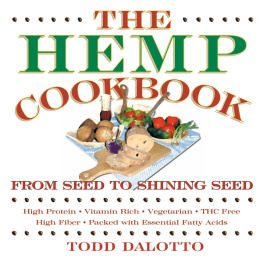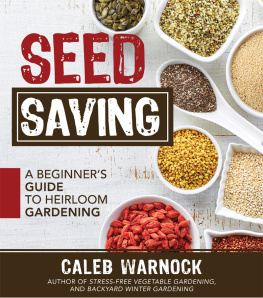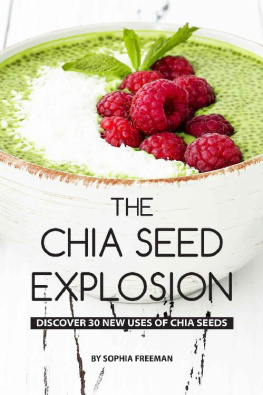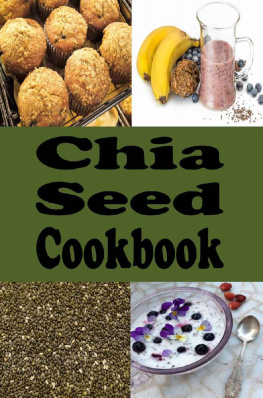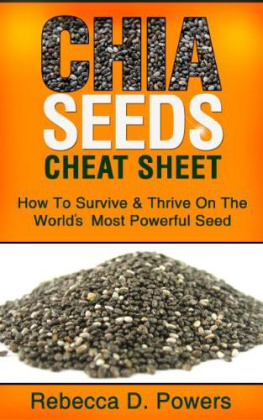
As we do before meals, let us give thanks:
To the cannabis plant.
Born of the earth;
offering its essence and entirety for healing on all levels;
praises to the plant that transforms the energies of pain, fear, and destruction
into healing, strength, and creation.
We
children of the earth,
healers,
cultivators
are here to resonate with your healing energies for the good of all life.
We are the root
grounded and firmly connected to the earth.
We are the stalk;
we rise up and emanate our strength.
We are the leaves,
beauty and gentleness.
We are the flowers,
freely sharing our healing gifts.
We are the seeds,
the children
and nourishment for all life.
Introduction
MY LIFE AS A HEMPSTER began in the fifth grade. The assignment was to write a factual report; the teacher left the topic open. Naturally I chose the most deviant subject in the librarymarijuana. While researching the topic, I stumbled upon some rather unexpected historical facts. Different strains of the same plant, Cannabis sativa, had long been used to make rope, paper, and cloth.
The nature of my interest shifted swiftly from sheerly mischievous to genuinely inquisitive. I cited historical evidence such as: the founding fathers of the United States were hemp farmers; the first American flag was made of hemp; the original draft of the U.S. Constitution was written on hemp paper; and that hemp was a major agricultural product in America until the 1940s.
To my dismay, the first school assignment that I was truly proud of received a D grade. There it was in red ink, Well written, but the assignment was to write a factual report. My life was transformed forever and my purpose was becoming apparent. I knew there must be a world of obscured truths and it was my job to challenge the dominant paradigm by disclosing them. That sounds awfully heavy for a ten year old, but thats the way I understand it now.
Meanwhile, I was discovering my love for cooking. My mother worked two jobs and couldnt make dinner for us every night. My sister and I often fended for ourselves with the cupboard full of macaroni and cheese. Refusing to give in to the monotony of mac and cheese every night, I began my self-taught endeavor of creative cooking.
My father, a second generation Italian American, helped me to discover the high connection between gardening and cooking. As a youngster I helped him bring tomatoes, eggplant, basil, and herbs from the garden to the kitchen, then to the dinner table. Ah, the appreciation of eating homegrown food!
As a young adult, my lifestyle became centered around living in harmony with the natural world and protecting Mother Earth from the modern world that threatens her. My life as an activist became tiring. I worked hard to fight the huge collective corporate monster that is rapidly devouring all that is good on this planet.
What seemed to be missing from my activism was a viable solution that everyone could live with. In the early 1990s, with the help of Jack Herers book, The Emperor Wears No Clothes (see , Suggested Reading), I was awakened to the idea that many of the worlds biggest ecological problems could be solved by centering industry around the use of Earths most amazing renewable natural resourcecannabis hemp.
I also learned that hempseed is one of the most nutritionally complete foods on the planet. Not only does it contain protein, it contains an abundant supply of important nutrients (essential fatty acids) that are nearly missing from common diets. If used as a staple food and nutritional supplement, hempseed can help heal or even prevent many of the most common degenerative diseases.
My greatest focus as an activist had been to encourage people to change their lifestyles by living simply, not using toxins, and living in harmony with nature. With commonsense, hemp-based industries, the change could occur without much effort. This insight blew my mind. I realized that every person on this planet could participate in the transformation without even stepping out of their current roles in life.
I set out on a vision quest to discover how I could best participate in this healing revolution. The vision was clear: to synchronize my talents as a healing food-crafter, an activist, and an Earth caretaker. It all came together in the form of a business I started in Eugene, Oregon, in 1994 called Hungry Bear Hemp Foods.
I successfully ran Hungry Bear Hemp Foods for three years, producing some of the first hemp food products on the market: candy bars called Seedy Sweeties, flours, butter, shakes, smoothies, and milk. The national media attention I received helped to spread the word about hempseeds incredible value as a nutritious food.
You are holding in your hands the next stage of the vision. This is the culmination of the past six years of my healing and culinary relationship with the greatest seed on Earth. My hopes are to inspire you, as I have been inspired, to improve the health of the planet and each other by making the best use of the hempseed.
Hempseed Overview will take you through the history of the hempseed and its cultivation, handling, and other uses. Once youve whet your appetite with The Healing and Nutritive Qualities of Hempseed, Hemp Food-Crafting 101 will give you a basic course on the transformation of hempseed into basic products such as oil, flour, and butter. With this knowledge you can easily follow the recipes and experiment with your own hempseed culinary creations.
Well celebrate the synthesis of cultivation and culinary arts in Hempseed in a Garden of Healing Foodswhere youll find soups, entres, salads, dips, breads, desserts ... and more. Not only does hempseed polish the glow of our health, it helps the songbirds sing and the cows jump over the moonread Food for Feathers, Fins, and Four Legs.
Be aware that recent studies and incidents have shown that the consumption of whole hempseed may result in a positive urine test of THC metabolites. Get informed and protect your rights by reading Free To Pee THC.
Finally, the Hemp Food Resource Directory ().

PART 1
Hempseed Basics

Hempseed Overview
CANNABIS IS THE PLANT GENUS in the family Cannabinaceae, of the order Urticales (nettle). Due to morphological and anatomical similarities, it was once classified in the mulberry family (Moroaceae). Many modern botanists classify the Cannabis genus as having only one species, sativa, consisting of the varieties C. sativa var. indica (Indian hemp), C. sativa var. ruderalis (wild hemp), and C. sativa var. vulgaris (cultivated hemp). These variety names have always been alternative species names in the Cannabis genus. This confusion should not be a factor in this book, though, because most food and fiber species are C. sativa.
Hempseed is technically an achene, an indehiscent fruit that is small and dry and usually contains an oily germ. Sunflower seeds are familiar examples of achenes. The hard hulls of achenes usually have no significant nutritional value and are often removed before consumption. Although hempseed hulls are among the easiest of achenes for us to chew and digest, hulled hempseed is highly desired, and is now beginning to take shape as a staple form of hemp food.
Next page
